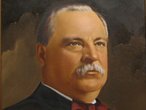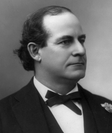| 2020-21_apush_ii_student_letter.docx | |
| File Size: | 189 kb |
| File Type: | docx |
First Quarter APUSH 2-
September 1-November 15
WEEK ONE Diagnostic Testing and US I Review
This week we will do some housekeeping, get to know each other, and review some important material from last year.
This week we will do some housekeeping, get to know each other, and review some important material from last year.
TEN things you need to do the FIRST WEEK of class:
1. Get a 1 1/2 inch, 3 ring binder. THIS IS REQUIRED. You will have difficulty passing this class without it.
2. Print the "Student letter (above), Have a Guardian sign it, Make it page 1 of your Binder (remember your binder?)
3. Sign into my Google classroom (Code given in class).
4.Sign into AP Classroom. Instructions given in class.
5. Sign into TURNITIN with our class information (you already have an account from Summer).
6.Read The American Vision (TAV) chapter 13 tab at left - under Textbooks.
7. Answer the reading checks that you find as you read the chapters.
8, In the section assessment, complete #1- DEFINE and #2- Identify.
9..Sign into our Online Textbook Directions given in class.
10. Make a list of Presidents 1 through 45. Next to each President put the year they came into office and their political party. Make this page 2 of your binder.
10 a. Find your US History notebook from last year- you will still need it.
LESSON ONE: What are Historical Thinking Skills and reasoning processes?
When you write an essay in APUSH, your thesis should reflect one the following...
Historical Reasoning Skills
EVERY THESIS SHOULD ARGUE ONE OF THE FOLLOWING.
Historical Reasoning Skills
EVERY THESIS SHOULD ARGUE ONE OF THE FOLLOWING.
LESSON TWO: THe happy hippo
You need to know this mnemonic:
Historical Context- What is going on in the time period that makes the evidence relevant to the thesis?
Audience- Who is the document intended for and why is that relevant to the thesis
Purpose- What is the author trying to accomplish and...why is it important to the thesis?
Point of view- How does the author view his/her world ? AND Why is that important?
Y- Why is the document important as support for your thesis? NOTE- YOU MUST Do one of HAPP AND Y.
Historical Context- What is going on in the time period that makes the evidence relevant to the thesis?
Audience- Who is the document intended for and why is that relevant to the thesis
Purpose- What is the author trying to accomplish and...why is it important to the thesis?
Point of view- How does the author view his/her world ? AND Why is that important?
Y- Why is the document important as support for your thesis? NOTE- YOU MUST Do one of HAPP AND Y.
|
WEEK Two: US One Review
Readings: TAV Chapter 12 (Complete the Chapter Assessment Key Terms and Key Facts) Brinkley Chapter 15 (answer the practice Q's) Selected Readings from class SKILL: What is CONTEXTUALIZATION? How is that different from HISTORICAL CONTEXT? AP Classroom:Period 5 Progress Check
US 1 Review- Reconstruction 1865-1877Reconstruction was the process of bringing the southern states that had seceded during the Civil War back into the Union. There were many disagreements about the best way to accomplish this and many important pieces of legislation emerged as a result. Reconstruction lasted from the end of the Civil War in 1865 until the Tilden-Hays Compromise in 1877 restored the Democrats to power in the South.
The Civil War and Reconstruction altered the balance of power between states and the federal government, as well as the balance among the three branches of government. Many social and economic patterns remained unchanged although much change was promised. (POL5) (POL6) (ID5) (SK20 (SK8) (SK9) Constitutional changes involving citizenship, particularly for African-Americans, women, and other minorities, led to new political and social conflicts. (POL6) In Class Essay- Compare the lives of southern whites to the lives of freed African Americans as a result of Reconstruction. (AP Practice Test 2- 2015-DBQ2)
Homework: Review the American History PPT (or Video) on Chapter 15.
THEN, complete the chapter 15 video guide. KEEP the guide in your BINDER (remember the binder? I said it was important!). | |||||||||||||||||||
|
| |||||||||||||
| reconstruction_millionaire.ppt | |
| File Size: | 2938 kb |
| File Type: | ppt |
US 1 Review- Western Expansion and Its Impact on the American Character (1860-1895) Click here
WEEK Three: US One Review
Readings:
TAV Chapter 13 (Complete the Chapter Assessment Key Terms and Key Facts)
Brinkley Chapter 16 (answer the practice Q's)
Selected Readings from class
Readings:
TAV Chapter 13 (Complete the Chapter Assessment Key Terms and Key Facts)
Brinkley Chapter 16 (answer the practice Q's)
Selected Readings from class
|
| ||||||||||||
As America expanded, many Americans desired to move westward and cultivate new lands. Federal government policies intended to facilitate the move westward, but it was often at the expense of the Native Americans who already occupied the land. As Americans continued to move the frontier farther and farther west, America expanded across the continent.
Americans encouraged relatively free and open immigration during the 18th and early 19th centuries, and rarely questioned that policy until the late 1800s. After certain states passed immigration laws following the Civil War, the Supreme Court in 1875 declared regulation of immigration a federal responsibility. Thus, as the number of immigrants rose in the 1880s and economic conditions in some areas worsened, Congress began to pass immigration legislation.
The Chinese Exclusion Act of 1882 and Alien Contract Labor laws of 1885 and 1887 prohibited certain laborers from immigrating to the United States. The general Immigration Act of 1882 levied a head tax of fifty cents on each immigrant and blocked (or excluded) the entry of idiots, lunatics, convicts, and persons likely to become a public charge.
These national immigration laws created the need for new federal enforcement authorities. In the 1880s, state boards or commissions enforced immigration law with direction from U.S. Treasury Department officials. At the Federal level, U.S. Customs Collectors at each port of entry collected the head tax from immigrants while "Chinese Inspectors" enforced the Chinese Exclusion Act.
Americans encouraged relatively free and open immigration during the 18th and early 19th centuries, and rarely questioned that policy until the late 1800s. After certain states passed immigration laws following the Civil War, the Supreme Court in 1875 declared regulation of immigration a federal responsibility. Thus, as the number of immigrants rose in the 1880s and economic conditions in some areas worsened, Congress began to pass immigration legislation.
The Chinese Exclusion Act of 1882 and Alien Contract Labor laws of 1885 and 1887 prohibited certain laborers from immigrating to the United States. The general Immigration Act of 1882 levied a head tax of fifty cents on each immigrant and blocked (or excluded) the entry of idiots, lunatics, convicts, and persons likely to become a public charge.
These national immigration laws created the need for new federal enforcement authorities. In the 1880s, state boards or commissions enforced immigration law with direction from U.S. Treasury Department officials. At the Federal level, U.S. Customs Collectors at each port of entry collected the head tax from immigrants while "Chinese Inspectors" enforced the Chinese Exclusion Act.
Homework: Review the American History PPT (or Video) on Chapter 16.
THEN, complete the chapter 16 video guide.
KEEP the guide in your BINDER.
THEN, complete the chapter 16 video guide.
KEEP the guide in your BINDER.
|
|
|
| ||||||||||||
|
| ||||||||||||||||||
PERIOD 7: 1890-1945
|
WEEK Four
Readings: TAV Chapter 14 (Complete the Chapter Assessment Key Terms and Key Facts) Brinkley Chapter 19 (answer the practice Q's) NOTE : THIS IS NOT IN ORDER!!! Readings: Cross of Gold Speech Populist Party Platform Selected Readings from Class IMPORTANT THINGS TO KNOW
Using the census data from 1890, Frederick Jackson Turner believed the frontier was closed. This helped lead to overseas expansion. After the Spanish-American War, the US entered the Progressive Era, which could also be seen as a Turning Point. The 1920s, while “roaring,” saw the US become isolated. After entering the Great Depression, FDR became president and ushered in the New Deal. Finally, World War II ended in 1945. Frederick Jackson Turner, Frontier Thesis: In his analysis of how the frontier, moving from east to west, shaped the American character and institutions, Turner decisively rejected the then common belief that the European background had been primarily responsible for the characteristics of the United States. He also justified overseas economic expansion as a means to secure political power at a time when America began focusing on expanding its influence throughout the world.
IndustrializationWEEK Five
Readings: TAV Chapter 15 (Complete the Chapter Assessment Key Terms and Key Facts) Brinkley Chapter 17 (answer the practice Q's) Readings: Selected Readings from Class Rapid urbanization began in the 1870s as people flocked to the cities. These urban centers quickly crowded, and many cities became impersonal metropolises that were divided into business, residential, social and ethnic centers. Amidst this chaos, corruption thrived as political bosses ran the city for their own personal gain. It appeared as if the nation was modernizing quicker than it could deal with problems of urbanization.
Homework: Review the American History PPT (or Video) on Chapter 17. THEN, complete the chapter 17 video guide. KEEP the guide in your BINDER. |
|
Writing an Essay for APUSH (DBQ or LEQ)
First Paragraph- Begin with at least three to five sentence in which you give the CONTEXTUALIZATION of the time period (this is an historical thinking skill that you get a point for). Then transition into your THESIS which should be a complex sentence beginning with the word ALTHOUGH (pay homage to the counter-argument) and reflects a reasoning skill of Continuity and change, Causation, or Comparison. You should give your reader an insight into the THREE topics you will address in the body of your essay. Second, Third, and fourth Paragraphs - Start with a TOPIC SENTENCE that is the main idea of your paragraph and that supports your thesis. Then, give TWO pieces of evidence or examples that support that topic sentence. For a DBQ, you should explain how that evidence supports it using some variation of HIPPO: Historical Context that relates to the thesis, Intended Audience of the author, Purpose of the author, Point of View of the author. Offer as evidence one piece of Outside Information (not mentioned in the documents) that is relevant to the thesis. For an LEQ, you should give SPECIFIC examples that support your point. Conclusion Paragraph (if you have time) Pull together the topic sentences of each paragraph (remind me how you proved your point using your categories). This doesn’t have to be long or fancy. DON’T EVER SAY “In conclusion,…” Just conclude. Directly answer the question (a reiteration of the thesis statement in somewhat different words). DON'T introduce evidence by calling it "Document A" or "the first document" Call it the title given in the sourcing. |
What is a thesis?-
We will learn how to present a thesis that makes a historically defensible claim and responds to all parts of the question. The thesis must consist of one or more sentences located at the END of the introduction. How do I develop an argument? If you make your thesis statement a complex sentence beginning with the word "although", You are more likely to get the point for analysis on your AP rubric. It demonstrates that you are considering an alternative argument. We will learn how to develop and supports a cohesive argument that recognizes and accounts for historical complexity by explicitly illustrating relationships among historical evidence such as contradiction, corroboration, and/or qualification.
| ||||||||||||||||||
|
| ||||||||||||
| industrialization.pptx | |
| File Size: | 10001 kb |
| File Type: | pptx |
Essay Assignment: Trace the development of national politics in America during the “Gilded Age” and explain the dynamics operative during this age that persuaded middle-class reformers to turn their attention to creating social change. Who were the reformers and what were their purposes? Discuss the various reformist philosophies for confronting the problems associated with growing inequalities of wealth in the society.
Terms:
Pendleton Act of 1883, temperance movement, , settlement house movement, l, NAWSA, People’s Party.
Please submit through TURNITIN.COM (90% of your grade) and hard copy in class (10% of your grade).
The Rise of American Imperialism (1890-1913
)A PERIOD OF FOREIGN POLICY INACTION
A SIGN OF THINGS TO COME: HAWAII
THE 1890s: REASONS FOR AMERICAN IMPERIALISM
THE SPANISH-AMERICAN WAR
THE ROLE OF AMERICA: PROTECTOR OR OPPRESSOR?
THE DEBATE OVER THE PHILIPPINES
CONNECTING THE PACIFIC AND THE ATLANTIC: THE PANAMA CANAL
THE ROOSEVELT COROLLARY
CHAPTER REVIEW
Terms:
Pendleton Act of 1883, temperance movement, , settlement house movement, l, NAWSA, People’s Party.
Please submit through TURNITIN.COM (90% of your grade) and hard copy in class (10% of your grade).
The Rise of American Imperialism (1890-1913
)A PERIOD OF FOREIGN POLICY INACTION
A SIGN OF THINGS TO COME: HAWAII
THE 1890s: REASONS FOR AMERICAN IMPERIALISM
THE SPANISH-AMERICAN WAR
THE ROLE OF AMERICA: PROTECTOR OR OPPRESSOR?
THE DEBATE OVER THE PHILIPPINES
CONNECTING THE PACIFIC AND THE ATLANTIC: THE PANAMA CANAL
THE ROOSEVELT COROLLARY
CHAPTER REVIEW
| imperialism_millionaire.ppt | |
| File Size: | 2966 kb |
| File Type: | ppt |
PROGRESSIVISM
In the Progressive Era of the early 20th century, Progressives responded to political corruption, economic instability, and social concerns by calling for greater government action and other political and social measures.
LINK: How the other half lives (selected passages)
ANSWER 5 QUESTION ON PROGRESSIVISM
| progressivism.ppt | |
| File Size: | 1498 kb |
| File Type: | ppt |
As Americans viewed the poverty throughout their cities, middle class Americans strove to enact reform measures that would aid their society. Groups were formed to aid the less fortunate Americans who inhabited the slums of the cities. Although these citizens strove to aid their fellow man, in many cases, there was a prevalent feeling of condecension towards the poorer classes.
Multiple Choice on Progressivism
Multiple Choice on Imperialism
Matching quiz on African Americans in the progressive era
The Progressive Era (1895-1914)THE ORIGINS OF PROGRESSIVE
THE GOALS OF PROGRESSIVES
URBAN REFORMS
THE PROGRESSIVES AT THE STATE LEVEL
WOMEN AND PROGRESSIVE
REFORMING THE WORKPLACE
THE SQUARE DEAL OF THEODORE ROOSEVELT
PROGRESSIVISM UNDER WILLIAM HOWARD TAFT
THE 1912 PRESIDENTIAL ELECTION
THE PROGRESSIVE LEGACY OF WOODROW WILSON
DID PROGRESSIVISM SUCCEED?
CHAPTER REVIEW
THE GOALS OF PROGRESSIVES
URBAN REFORMS
THE PROGRESSIVES AT THE STATE LEVEL
WOMEN AND PROGRESSIVE
REFORMING THE WORKPLACE
THE SQUARE DEAL OF THEODORE ROOSEVELT
PROGRESSIVISM UNDER WILLIAM HOWARD TAFT
THE 1912 PRESIDENTIAL ELECTION
THE PROGRESSIVE LEGACY OF WOODROW WILSON
DID PROGRESSIVISM SUCCEED?
CHAPTER REVIEW
|
| ||||||||||||
|
| ||||||||||||||||||||||||||||||||||||
What do you expect me to do with these documents?
|
Historical Context,
Intended Audience, Point of view, Purpose, and then bring in some Outside information that comes to mind when you read the document. |
|
Context-
Audience Point of view Purpose |
| ap_us_history-_how_to_write_a_dbq.doc | |
| File Size: | 55 kb |
| File Type: | doc |
WORLD WAR ONE -or- The great war
| 21._wwi_all_of__it_.pptx | |
| File Size: | 18663 kb |
| File Type: | pptx |
When war burst upon Europe in August 1914, most Americans wanted no part. Wilson immediately proclaimed American neutrality and called on the nation to be neutral "in thought and in action." Yet the United States and Britain were linked by extensive economic ties and many Americans felt close emotionally with the British. Fearing a world dominated by imperial Germany, and seething over violation of neutral rights on the seas, Wilson declared war in 1917.
Readings:
Brinkley Chapter 21
TAV Chapter 19
Selected
Woodrow Wilson, Message to Congress, August 19, 1914
Theodore Roosevelt, “The Hun within Our Gates,” 1917
Wilson's Fourteen Points
https://www.gilderlehrman.org/history-by-era/world-war-i/resources/guided-readings-world-war-i
World War I and its aftermath intensified debates about the nation’s role in the world and how best to achieve national security and pursue American interests. (WOR-4) (WOR-7) (ID-3) (POL-6)
Multiple Choice on World War One
Flashcards: Foreign Policy during WWI
World War One Flashcards
More flashcards on World War One
| woodrow_wilson.docx | |
| File Size: | 177 kb |
| File Type: | docx |
| apworld_war_i.pptx | |
| File Size: | 9010 kb |
| File Type: | pptx |
| wwi__fill_in_notes.doc | |
| File Size: | 68 kb |
| File Type: | doc |
| study_guide_chapt_21.doc | |
| File Size: | 87 kb |
| File Type: | doc |
| wwi_millionaire.ppt | |
| File Size: | 2964 kb |
| File Type: | ppt |
| welcome_to_versailles.docx | |
| File Size: | 23 kb |
| File Type: | docx |
The United States and World War I
THE AMERICAN RESPONSE TO THE OUTBREAK OF WAR
INCREASING AMERICAN SUPPORT FOR THE ALLIED POWERS
AMERICA MOVES TOWARD WAR
AMERICA ENTERS THE WAR
THE IMPACT OF THE AMERICAN EXPEDITIONARY FORCE
THE HOME FRONT DURING WORLD WAR I
KEEPING AMERICA PATRIOTIC
WOODROW WILSON AND THE TREATY OF VERSAILLES
THE TREATY OF VERSAILLES AND THE UNITED STATES SENATE
THE CONSEQUENCES OF AMERICAN ACTIONS AFTER THE WAR
CHAPTER REVIEW
THE AMERICAN RESPONSE TO THE OUTBREAK OF WAR
INCREASING AMERICAN SUPPORT FOR THE ALLIED POWERS
AMERICA MOVES TOWARD WAR
AMERICA ENTERS THE WAR
THE IMPACT OF THE AMERICAN EXPEDITIONARY FORCE
THE HOME FRONT DURING WORLD WAR I
KEEPING AMERICA PATRIOTIC
WOODROW WILSON AND THE TREATY OF VERSAILLES
THE TREATY OF VERSAILLES AND THE UNITED STATES SENATE
THE CONSEQUENCES OF AMERICAN ACTIONS AFTER THE WAR
CHAPTER REVIEW
Post WWi America (Red Scare, Normalcy)
The war affected the lives of millions of industrial workers, farmers, women, and blacks in important ways. For all its horrors, World War I brought prosperity to the American economy. The wartime mood also gave a boost to moral-reform movements. Still, the wartime spirit saw new racial violence and fresh antiradical hysteria. The antiradical panic crested in the Red Scare of 1919-1920. Americans, tired of idealism, revealed their feelings in the election of 1920 leaving Republican Warren Harding in the office.
The Twenties
American culture and society in the 1920s were marked by a wave of new lifestyles and ideas. While the movie industry produced new celebrities and jazz music became popular, literature flourished and flappers defined a social trend. Amidst the speakeasies, jazz, and jitterbugs, Americans began to stray from traditional values as the culture changed.
|
Text Chapter 20.1
The "Lost Generation" defines a sense of moral loss or aimlessness apparent in literary figures during the 1920s. World War I seemed to have destroyed the idea that if you acted virtuously, good things would happen. Many good, young men went to war and died, or returned home either physically or mentally wounded (for most, both), and their faith in the moral guideposts that had earlier given them hope, were no longer valid...they were "Lost." | ||||||||||||
|
Key vocabulary terms to know for this time period:
Check the following terms out on Quizlet HERE. “Closing” of the Frontier: Frederick Jackson Turner's Frontier Thesis argued the frontier was "closed." Led many Americans to call for overseas expansion Progressive Era: 1890 - 1920, Progressives tended to be women, middle class, and live in urban areas. Progressives sought to use government influence to solve societal problems. Transition from Rural to Urban Society: US society adjusted as more people moved to cities - 1920 census - more people live in cities than rural areas World War I: US entrance in 1917. US played a relatively minor role in the war, but large role in postwar negotiations. Great Migration: Mass movement of African Americans from the South to the North during WWI for economic opportunities Treaty of Versailles and League of Nations: Treaty that ended WWI; League led to debates over the role of the US in the world; ultimately, the US did NOT join the League Red Scare: Fear of Communism after WWI, caused by: Russian Revolution, labor strikes post WWI, nativism; led to a crackdown on immigrants and radicals (suppression of rights) Harlem Renaissance: Celebration of African American culture through music, poetry, and writing. Key people - Langston Hughes, Claude Monet, Zora Neale Hurston Restrictive Immigration Quotas: 1921 and 1924 acts that severely limited |
Resources for this Marking Period:
Unit 5 Reading Guide Ch. 17 Class Activity: Captains of Industry or Robber Barons? Ch. 17 Supplementary Reading: What Was the Greatest Era of American Innovation & Analysis Questions Ch. 17 Class Activity: Continuities and Changes in the Labor Movement Ch. 18 Primary Sources: Turner's Frontier Thesis and the Populist Platform Ch. 18 Supplementary Resource: Little War on the Prairie (Transcript) & Analysis Questions Ch. 18 Video: The West - Fight No More Forever Ch. 19 Class Activity: When did the Progressive Era Begin and End? Ch. 19 Class Activity: Progressive Reform Debate Ch. 19 Supplementary Reading: The National Parks & Analysis Questions Unit 5 LEQ: Comparing the Populist and the Progressive Movements |
America in the 1920s: The Beginning of Modern America
America of the 1920s was a period of prosperity as well as industrial and technological growth. With the recent end of World War I, Americans yearned for a return to "normalcy" and political leaders that could provide it, thus turning to the leadership of Warren G. Harding.
A DECADE OF PROSPERITY
REPUBLICAN LEADERSHIP IN THE 1920s
THE PRESIDENCY OF WARREN G. HARDING
THE SCANDALS OF THE HARDING ADMINISTRATION
THE PRESIDENCY OF CALVIN COOLIDGE
THE ELECTION OF 1928
URBAN VS. RURAL: THE GREAT DIVIDE OF THE 1920s
CULTURE IN THE 1920s
THE JAZZ AGE
THE LOST GENERATION
CHAPTER REVIEW
REPUBLICAN LEADERSHIP IN THE 1920s
THE PRESIDENCY OF WARREN G. HARDING
THE SCANDALS OF THE HARDING ADMINISTRATION
THE PRESIDENCY OF CALVIN COOLIDGE
THE ELECTION OF 1928
URBAN VS. RURAL: THE GREAT DIVIDE OF THE 1920s
CULTURE IN THE 1920s
THE JAZZ AGE
THE LOST GENERATION
CHAPTER REVIEW
| ap_ch_21_.ppt | |
| File Size: | 2936 kb |
| File Type: | ppt |
MANKEW'S 10 PRINCIPLES of Economics and Freakonomics Mini lesson
| |||||||||||||







